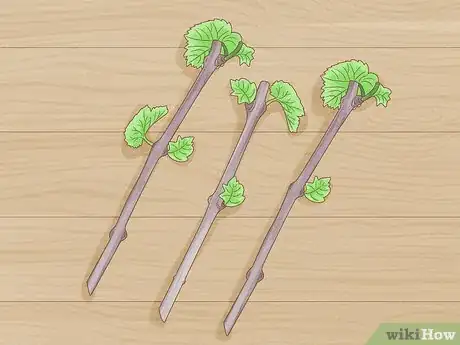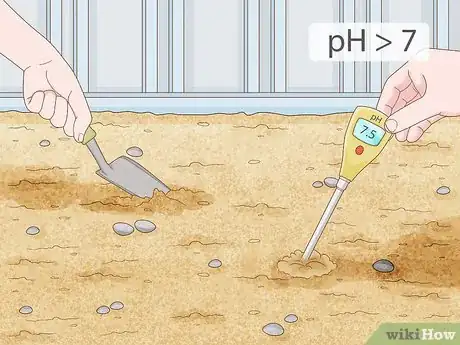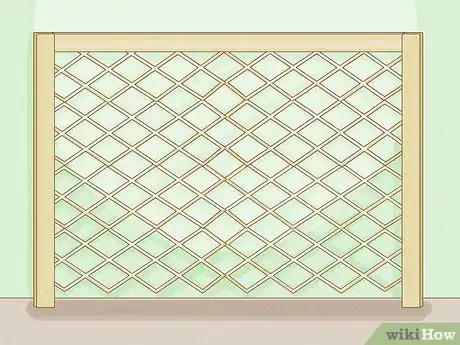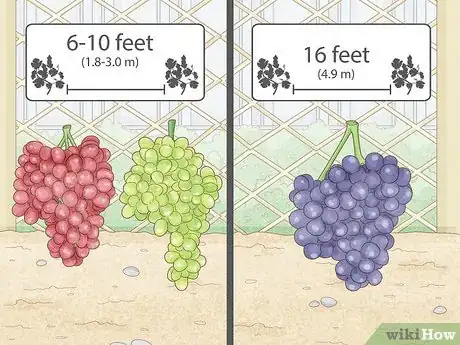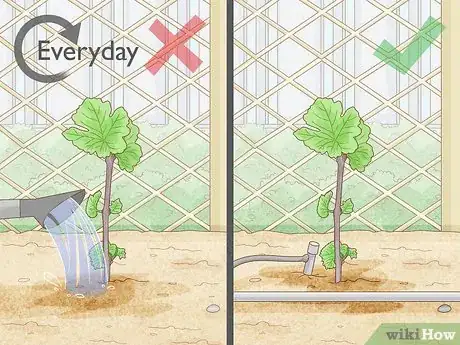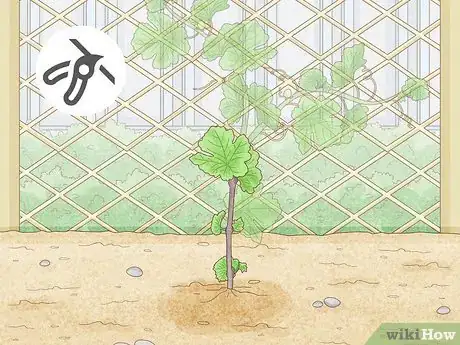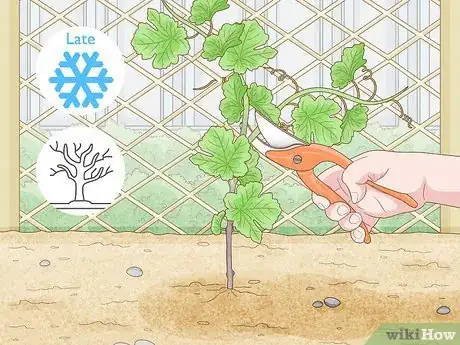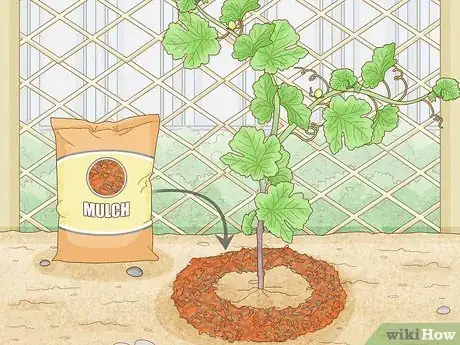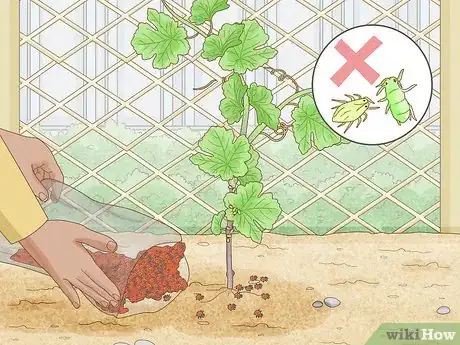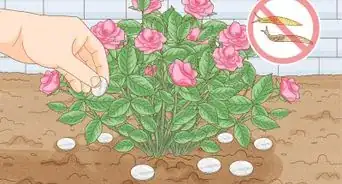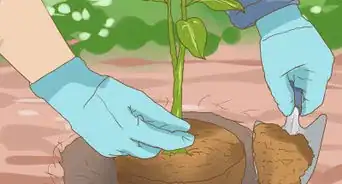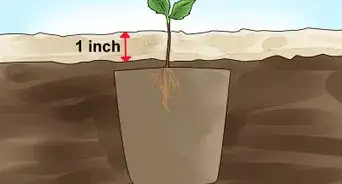This article was co-authored by Andrew Carberry, MPH. Andrew Carberry is a Food Systems Expert and the Senior Program Associate at the Wallace Centere at Winrock International in Little Rock, Arkansas. He has worked in food systems since 2008 and has experience working on farm-to-school projects, food safety programs, and working with local and state coalitions in Arkansas. He is a graduate of the College of William and Mary and holds a Masters degree in public health and nutrition from the University of Tennessee.
wikiHow marks an article as reader-approved once it receives enough positive feedback. This article received 31 testimonials and 91% of readers who voted found it helpful, earning it our reader-approved status.
This article has been viewed 1,054,672 times.
Grapes are certainly a multi-purpose fruit, being used for wine, baked goods, jams, and for eating fresh off the vine. With their ability to grow in many places around the world, they are a great addition to any garden.
Steps
Preparing for Planting
-
1Choose a type of grape. As with any plant, certain types of grapes grow better in different areas and offer up different flavors and appearances. There are three general types of grapes: American, European, and Muscadine grapes. American grapes grow best in warm, sunny climates like that of central California. European grapes are common in Europe and Northern parts of the US, and Muscadine grapes are commonly found in the Southern US.
- Within each general type of grapevine, there are multiple species to choose from which each offer up their own flavor, color, texture, and size. Visit a local nursery to find one that fits your needs and environment.
- Select plants that look healthy and strong, and are 1 year old. When possible, get them certified virus-free to ensure that their healthy growth is continued.[1]
- Look for plants that have an even root distribution, and whose canes are symmetrical.
-
2Prepare your own grapevine cuttings. If you or a friend has another grapevine you’d like to plant from, you can take a cutting and plant it in a new location. To use your own cuttings: Cut the sections directly from the vine or from brush that has recently been pruned off. Make sure the cutting is 3 nodes long (the nodes will look like bumps). At the bottom of the cutting, make the cut at an angle. This cut should be at 45 degrees and 1/4 to 1-inch above the node.
- When taking cuttings, plant as many as possible - in as many locations as possible - to have a higher chance of success. Surplus plants can be given away.
Advertisement -
3Select a suitable location. Grapevines are long term plants that can live between 50 and 100 years. Therefore, make sure that the location you select is a permanent one that will offer up plenty of room for future grapevines. Grapevines thrive in sloped and hilly areas that offer up plenty of drainage and sunlight. When possible, plant your grapevines on a downward slope on a south-facing hill, in an area clear of other trees and large plants.
- In cold areas be sure to plant the grapevines in a sunny area, preferably facing south. A southern facing location may prevent frost nipping the vines. Also avoid "frost pockets" such as low-lying areas or the base of a slope, where cold air can pool and ruin a crop.
- If you live in the Southern Hemisphere, north-facing slopes are sunnier.
-
4Prepare the soil. Grapevines are a bit picky about their soil conditions, so make sure your are just right before planting. Use soil that slightly rocky or sandy with a pH just above 7. Amend the soil to promote good drainage if necessary, as water-logged roots are not conducive to healthy growing grapevines.[2]
- For best results, take a soil sample to an agricultural extension office or soil testing laboratory for a complete soil test. This is usually cheap or free. If this is not possible, test the soil pH with an at-home kit and add pH adjusters to your soil if necessary.
- Although it may seem counterintuitive, grapevines do not like soil that is too nutrient-rich. Avoid heavily fertilized soil when possible, and follow recommendations from a soil test result or an experienced local grower.[3]
-
5Prepare a trellis for your grapevines. Grapevines are, as the name implies, vine plants that grow upwards along a support structure. If you are not planting your grapes along a fence or other structure, construct or buy a trellis for them to grow along. This is typically a wooden structure made of intertwined boards that allow the vines to wrap around them, providing a sturdy support system.
- Latticed wood and wire can be purchased and attached to fence posts for an easy homemade trellis, if you don’t have the funds or ability to purchase or make your own.
- Don’t use a single stake (as you might for tomato plants) as this won’t provide enough support for your vines once they start growing.
-
6Know when to plant. Wait to plant your grapevines until a frost-free day in late winter or early spring. Pruning should happen around this time in upcoming years as well. Contact your local agricultural service for exact planting dates.
Planting Your Grapevines
-
1Plant your grapevines. Depending on the species of grapes you are planting, spacing will be different for each plant. For American and European grapes, plant each vine 6–10 feet (1.8–3.0 m) apart. Muscadines require much more space, and should be planted approximately 16 feet (4.9 m) apart. Plant the cuttings in a trench with the basal and center bud covered. The top bud should be just above the soil surface. Press the soil firmly around the newly planted grapevine cuttings.
- How deep you plant the vines will depend on the age and size of each individual plant. Don’t bury the vine cane any higher than the first bud, but make sure the roots are completely covered in soil.
-
2Give your plants a good watering. Grapevines don’t prefer heavy water or rain, so after the first watering keep the amount of water you give them to a minimum. Keep water near the roots so that the majority of it gets absorbed rather than evaporated by the sun. If your area doesn’t get much rain, set up a drip system directly at the roots so that the grapevines get small amounts of water on a regular basis.[4]
-
3Prune your grapevines. The first year, the grapevine should not be allowed to produce any fully matured fruits as these can damage the young vine with their weight. Cut back all the fruit, as well as all the vines except for the strongest that branch off the cane. In later years prune as needed following established local practices, and prune back 90% of the new growth on older vines each year.
-
4Prune vines when dormant. Always always prune grapevines when they are dormant. They will otherwise bleed their sap - losing vigour. This is typically in late winter when it is no longer cold enough to frost outside.
-
5Mulch around the vines. A layer of mulch around your plants will regulate soil temperature, retain water, and reduce weeds.
-
6Apply pest control as needed. Little pest control is needed as grapevines are naturally hardy. Keep weeds at bay by hand-weeding on a regular basis, and cover you grapevines in bird net to keep birds away if necessary. Seek guidance from your local gardening club or agricultural extension on how to combat the Vine Moth. It is one of the few pests that can decimate grapevines.[5]
- Be sure to plant the grapevines so they receive enough airflow to prevent powdery mildew.
- Aphids can be a problem for grapevines; ladybugs are a natural consumer of aphids and will not damage your vines further.
-
7Harvest your grapes when appropriate. Strong, edible fruit likely won’t appear for anywhere from 1-3 years. When it appears, test its ripeness by picking a few grapes from different areas and tasting them. If the grapes are sweet, start picking as they ready for harvesting and eating.
- Grapes will not continue to ripen after picking (as is the case with other fruits) so be sure not to pick them prematurely.
- Color and size are not necessarily a good indication of ripe fruit. Only pick the fruit after you’ve tasted it and are certain it is ready.[6]
Expert Q&A
Did you know you can get expert answers for this article?
Unlock expert answers by supporting wikiHow
-
QuestionHow long from the time you first plant a bare root vine does it take to get actual grapes?
 Andrew Carberry, MPHAndrew Carberry is a Food Systems Expert and the Senior Program Associate at the Wallace Centere at Winrock International in Little Rock, Arkansas. He has worked in food systems since 2008 and has experience working on farm-to-school projects, food safety programs, and working with local and state coalitions in Arkansas. He is a graduate of the College of William and Mary and holds a Masters degree in public health and nutrition from the University of Tennessee.
Andrew Carberry, MPHAndrew Carberry is a Food Systems Expert and the Senior Program Associate at the Wallace Centere at Winrock International in Little Rock, Arkansas. He has worked in food systems since 2008 and has experience working on farm-to-school projects, food safety programs, and working with local and state coalitions in Arkansas. He is a graduate of the College of William and Mary and holds a Masters degree in public health and nutrition from the University of Tennessee.
Food Systems Expert
-
QuestionMy vines are 60 years old and overgrown, How far back should I cut them?
 Andrew Carberry, MPHAndrew Carberry is a Food Systems Expert and the Senior Program Associate at the Wallace Centere at Winrock International in Little Rock, Arkansas. He has worked in food systems since 2008 and has experience working on farm-to-school projects, food safety programs, and working with local and state coalitions in Arkansas. He is a graduate of the College of William and Mary and holds a Masters degree in public health and nutrition from the University of Tennessee.
Andrew Carberry, MPHAndrew Carberry is a Food Systems Expert and the Senior Program Associate at the Wallace Centere at Winrock International in Little Rock, Arkansas. He has worked in food systems since 2008 and has experience working on farm-to-school projects, food safety programs, and working with local and state coalitions in Arkansas. He is a graduate of the College of William and Mary and holds a Masters degree in public health and nutrition from the University of Tennessee.
Food Systems Expert
-
QuestionCan I grow them from seed?
 DenisekeCommunity AnswerYou can. In fact, there is a wikiHow article on this: How to Grow Grapes From Seeds. But be prepared to wait. It will probably be three or four years before you see real bunches of grapes.
DenisekeCommunity AnswerYou can. In fact, there is a wikiHow article on this: How to Grow Grapes From Seeds. But be prepared to wait. It will probably be three or four years before you see real bunches of grapes.
References
- ↑ http://www.almanac.com/plant/grapes
- ↑ https://www.almanac.com/plant/grapes
- ↑ http://www.diynetwork.com/outdoors/growing-grapevines/index.html
- ↑ http://www.sfgate.com/homeandgarden/article/9-steps-to-planting-grapevines-at-home-3428113.php
- ↑ https://extension.umn.edu/fruit/growing-grapes-home-garden#diseases-and-other-challenges-986261
- ↑ http://www.sfgate.com/homeandgarden/article/9-steps-to-planting-grapevines-at-home-3428113.php
About This Article
If you want to grow grape vines, pick a spot plenty of drainage and sunlight with slightly rocky or sandy soil. Either install a trellis or plant your grapes along a fence so the vines will have support as they grow. Plant your vines in late winter or early spring, placing the cuttings in a trench so the basal and center bud covered and the top bud is just above the soil surface. Give the plants a good watering, but then keep the water you give them to a minimum. For tips from our gardening reviewer on pruning your grape vines, keep reading!

